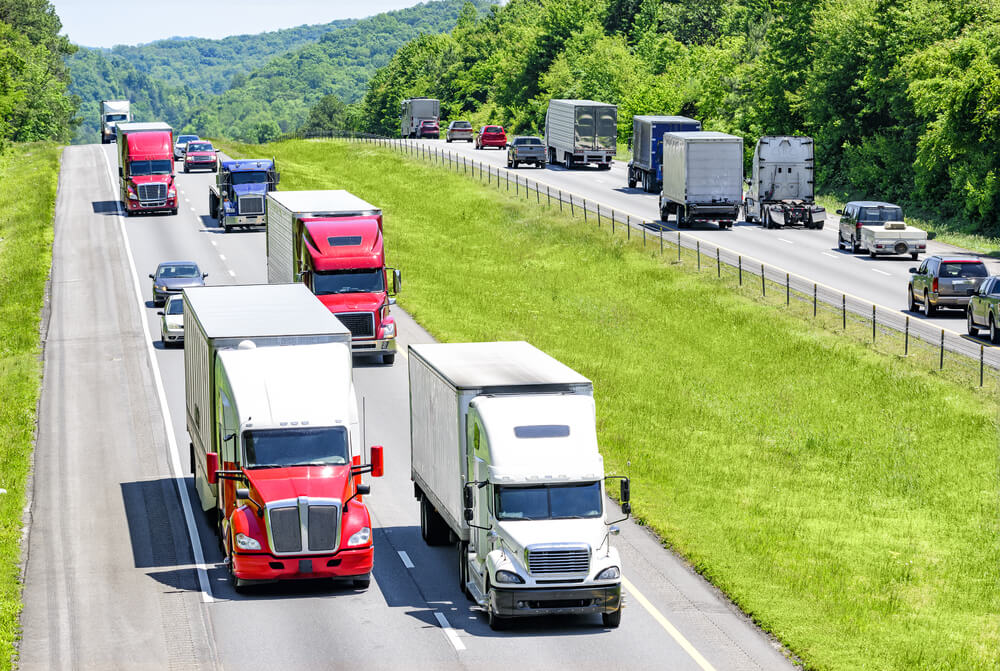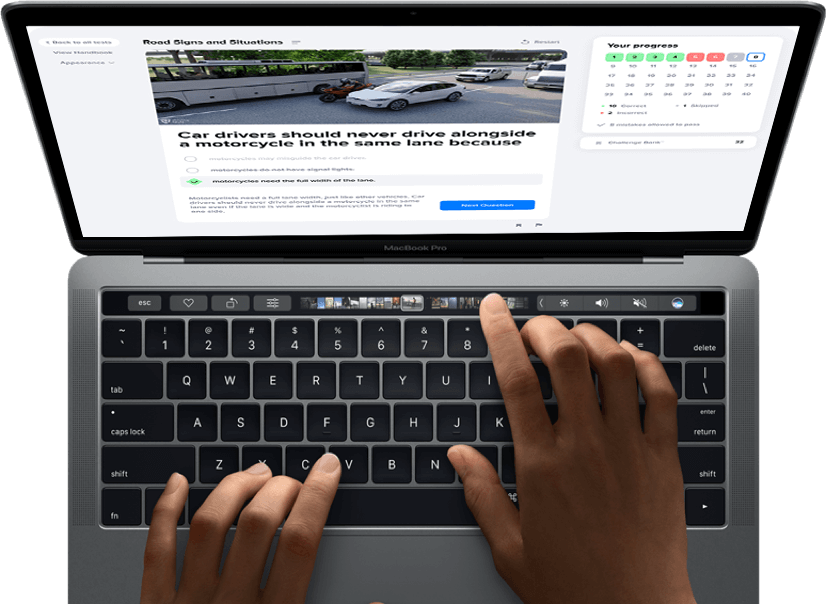What did you have for breakfast this morning? Eggs and toast? Maybe a bowl of cereal and milk? A grapefruit? No matter what you started your day off with, it more than likely appeared on your plate thanks to the efforts of a series of dedicated, hard-working, professional transfer truck drivers. Oftentimes, drivers find themselves annoyed or fearful when sharing the road with eighteen-wheelers; however, these truck drivers are responsible for many of our modern conveniences.
You’re reading one of our “Beginner Driver’s Guide” articles. Need to practice for your upcoming exam? Take our free sample driving test -- no registration required! ✨
It is important for drivers of normal-sized trucks, cars, and SUVs to learn how to safely share the roads with these giants.
6 Tips for Keeping Yourself and Your Passengers Safe while Driving Amongst Big Rigs:
- 1
Respect
Did you know that the primary reason our nation’s interstate system was created was to facilitate the mobilization of military support vehicles with swiftness and ease? That’s right. The super slab you use to get to your vacation destination without the inconvenience of traffic lights was made for tanks and transfer trucks. Today, eighteen wheeler operators depend on the interstate system (as well as state highways and local roads) to get their goods to their destinations, ultimately the stores where you shop. Always show respect and courtesy to these vehicles, even if their presence on the road inconveniences you. Always leave the room for trucks to merge into a highway.
- 2
Take responsibility
Don’t assume that an eighteen wheeler’s driver can see you on the roadway. Big rig drivers are operating very large vehicles under conditions regular drivers have a difficult time imagining: limited visibility, long braking distances, a transmission with upwards of sixteen gears, constant radio communication, time limits, and often dangerously little rest. Don’t place the added responsibility of your own safety on eighteen wheeler operators when driving in their vicinity. Assume they don’t see you and always yield to them, just in case.
- 3
Avoid big rigs’ blind spots
If you drive too closely behind or parallel to a transfer truck’s trailer, the driver will have great difficultly seeing you. If driving on an interstate or multi-lane highway, keep a generous distance when following a big rig, at least three to for car lengths. Pass eighteen wheelers quickly in the left lane or slow your own speed to allow them to pass you more quickly while in the right. Here you can see all the blindspots of a truck.
- 4
No drafting!
It is a common myth that drivers can improve their own gas mileage by harnessing the aerodynamics of a transfer truck’s trailer as they drive very close. Never tailgate any vehicle, but especially a large transfer truck. Not only is drafting a myth, you will put yourself and other motorists in serious danger of a fatal collision. There is more about no zones in the following video:
- 5
Be aware of right turns
Transfer trucks must exaggerate their steering when making right turns to avoid driving their trailers off of the roadway. This often means that they will require additional room to turn in the opposite lane or take up both the right and left lanes to turn on a multi-lane roadway. Never place your vehicle directly to the right of a transfer at a red light or stop sign when their turn signals indicate that they intend to make a right turn. Otherwise, this is what may happen.
- 6
Stay off the roads in poor weather
Heavy rain, ice, high winds, and snow create dangerous road conditions. If driving isn’t necessary during poor weather, stay off of the roads! Eighteen wheeler operators must brave the roads whatever the weather. Choosing not to drive in these conditions prevents accidents.
Remember, awareness of the challenges that eighteen wheeler operators face goes a long way in increasing your own safety when sharing the road with them.





